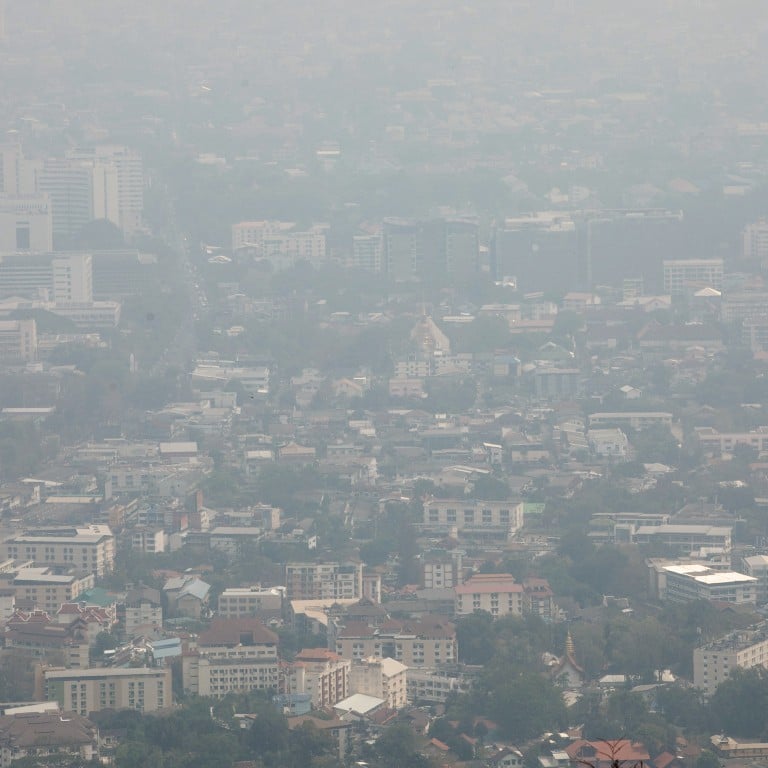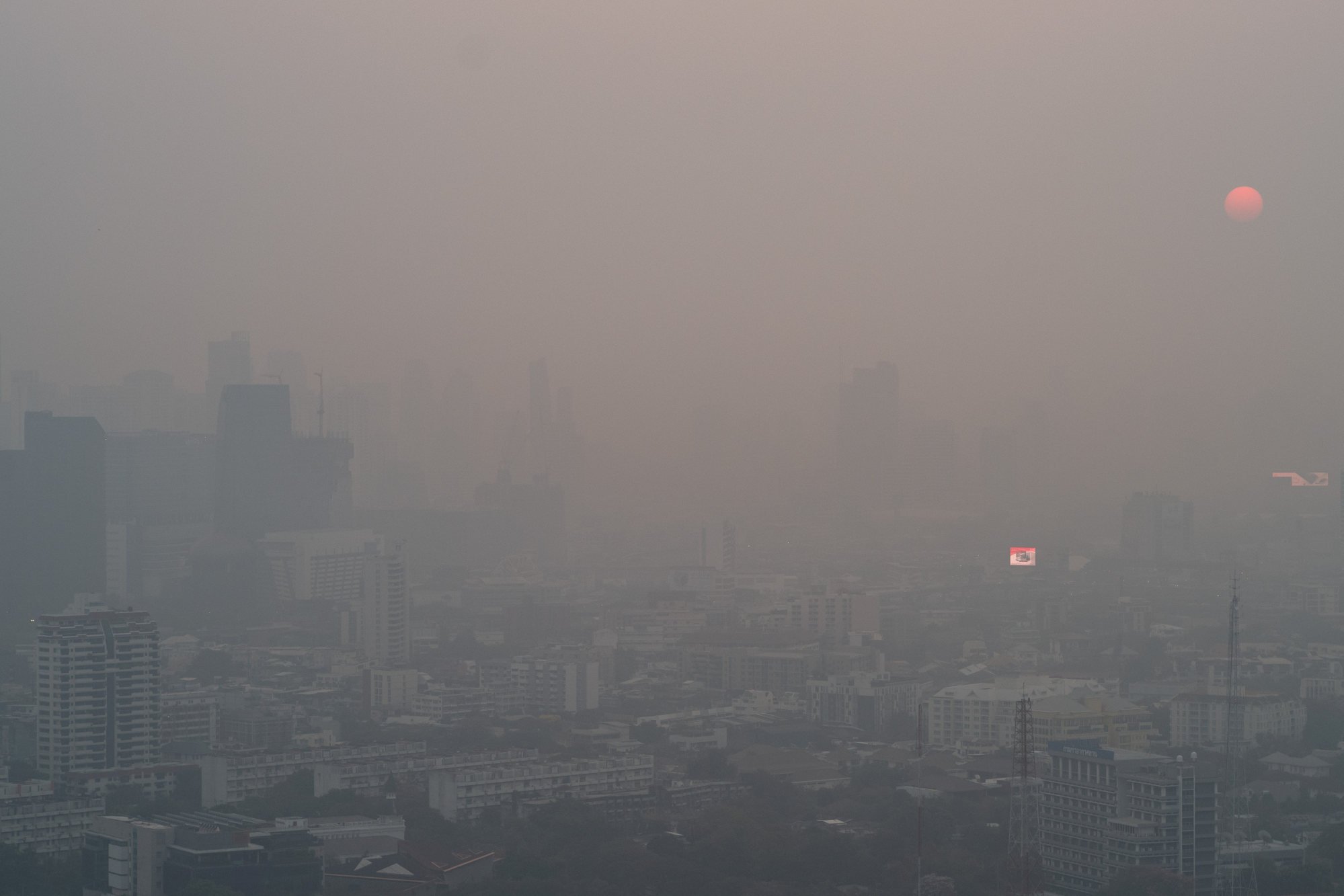
Land of Smiles? Grimaces, more like: how Thailand’s air pollution threatens the health of residents and its tourism industry
- Every winter, hazardous air pollution blights Thailand as farmers burn stubble, shrouding Bangkok and the country’s north in smog that causes disease
- 2023 has seen particularly high rates of illness caused by air pollution. This isn’t good for the Thai people or for the country’s image as a tourist paradise
“Take a trip to toxic Thailand.” Hmmm, despite the smart alliteration, we can’t see that one catching on as a tourism slogan.
The air in the Land of Smiles/Grimaces has been especially foul of late – and could prove to be a double whammy, as choking smog strikes down residents and at the same time weakens the nation’s tourism industry.
“At 10.30am, IQAir reported the US AQI (air quality index) value for Chiang Mai was 289 while the PM2.5 level was at 239 microgrammes per cubic metre [of air], which exceeds standard safety levels.”
I really think it’s time for embassies to issue strongly worded travel advice about this annual problem
As terrible as that sounds, 289 was an almost daisy level of freshness compared with the 550+ AQI readings (classed as “hazardous” by IQAir) that have been observed by John Roberts, group director of sustainability and conservation at the Anantara Golden Triangle Elephant Camp and Resort.
The emotional costs of polluted skies tallied in China study
“The air is so bad in #ChiangSaen even @IQAir don’t believe it & refuse to accept data …” – literally off the charts – “ … but I just stuck my head out the window &, yeah, believe it!” tweeted Roberts on March 28.
On April 4, he followed up with, “After a whole 24hr period where we maxed at #VeryUnhealthy air we’re back up into the #Hazardous #AQI this morning. Still no end in sight to the #ChiangRai #NorthThailand #AirPollution #Crisis, in fact @ChiangRaiGov still doesn’t think it’s a crisis.”
And the smog this year has been especially troublesome.

“On 10 March, Thai health authorities reported that in the first nine weeks of the year, more than 1.3 million people had already suffered air pollution-related diseases,” reports the BBC.
“In Chiang Rai, the haze has grown so thick as to obscure its famous mountains, and what is usually lush, green foliage appears grey.
“Drone footage passing over the city’s parks and streets show them near unrecognisable, with buildings reduced to smoky outlines.”
Songkran, Thailand’s New Year water festival: the good and the bad
And it’s not just the sharp edges that have been smothered. Local lungs are being assaulted by a huge wash of PM2.5 particles, which are small enough to find their way into the bloodstream.
PM2.5 dust can cause itchy or burning eyes and skin, coughing and tightness of the chest. Longer-term exposure has been linked to lung cancer and heart disease.
Writer Richard Barrow is another foreigner who has been suffering through this year’s smog. On March 30, he tweeted a 355 US AQI reading and the message, “The air quality in Northern Thailand continues to be ‘hazardous’. Pai [130km to the northwest of Chiang Mai], a popular destination for backpackers, is particularly dangerous.

“I really think it’s time for embassies to issue strongly worded travel advice about this annual problem.”
And this highlights the secondary threat presented by the repeated return of smog to the north and other parts of the country, notably Bangkok: “Thailand’s tourism future darkened by air pollution,” ran a recent headline on news outlet nikkei.com.
After all, who wants to return home from holiday with a respiratory infection for a souvenir!
In 2007, Chiang Rai was declared a disaster zone by its governor because of that year’s smog, and “Think-tank Kasikorn Research said the haze in the north could cause a two billion baht [then HK$472 million] loss in tourism revenue for the region”, according to an Agence France-Presse report. And that was before the full force of mass Chinese tourism was being felt.
The euphemistic “haze” (definition: a slight obscuration of the lower atmosphere) was considered an appropriate term back then; at least we have progressed to language such as “grim scenario”, which is a better fit for our apocalyptic times.
The BBC report advises: “Authorities have warned that the grim scenario will persist for the coming days, with few winds forecast that could blow the dust away.”
It’s probably OK to start planning a trip to northern Thailand for the coming months, but beware, choking conditions will no doubt return again in the winter of 23-24, and again in 24-25, and again in 25-26 …
One of the wishes at record-breaking Macau mall was hopefully for cleaner air

A jaw-dropping, breathtaking, mind-boggling 57,552 of the delicate creations are on display in the building’s atrium.
“The mall, according to the Guinness World Records website, reached the achievement on February 10, while an unveiling ceremony was held [on March 29],” reports the Macau Post Daily. “The record was achieved by inviting members of the public to write their wishes on origami paper and fold them into the shape of stars, which were then placed inside its wishing bottle.”

